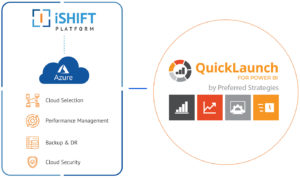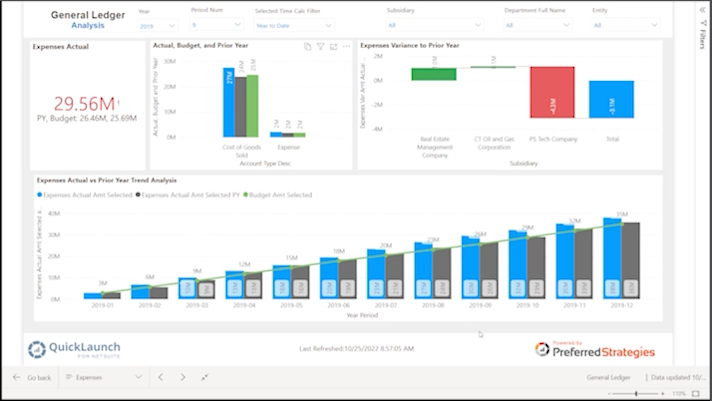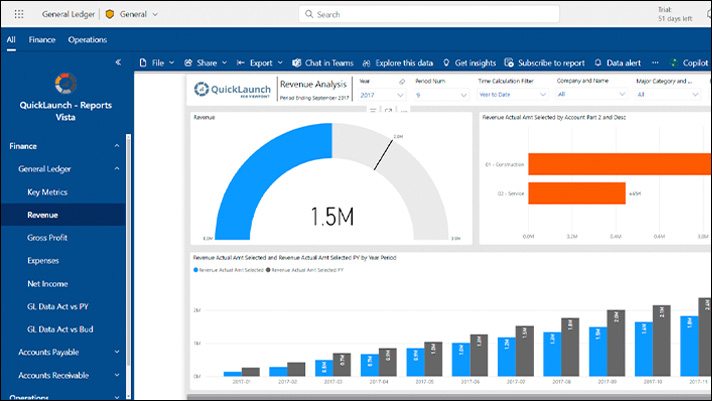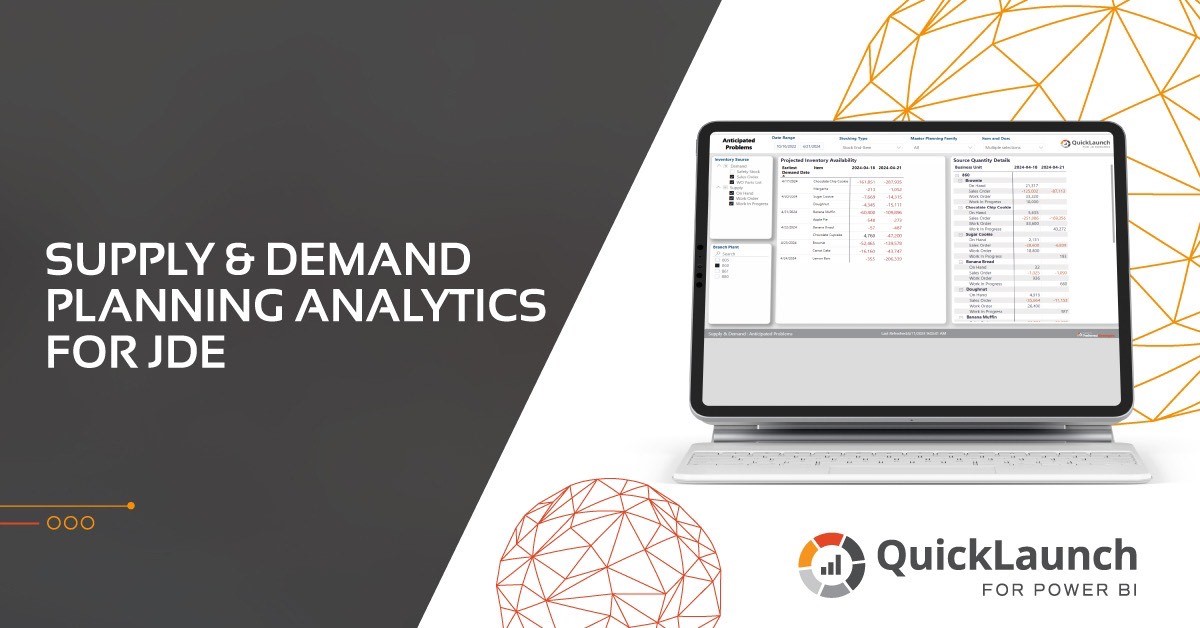
Today, according to Allied Market Research on Supply Chain Management, only 6% of companies claim to have full visibility into their supply chain. Furthermore, their 2023 report claims that organizations can double profits by reducing supply chain costs. This indicates that most companies can stand to make a lot more money if they are able to increase transparency through better access to supply chain information and more efficient processes.
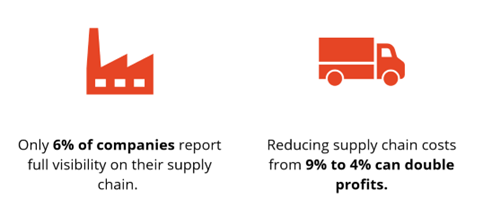
At Preferred Strategies, we’ve been helping manufacturing companies that run JD Edwards gain visibility into their supply chain processes since 2002 with our QuickLaunch for JDE solution. The latest QuickLaunch product release includes an innovative way for companies to improve inventory management by anticipating inventory shortages and making corrective actions before their supply chain is impacted further.
Watch the latest education session our CEO, Todd Wilson recently presented about JDE Supply and Demand Planning and his experiences as CIO of Clif Bar as they worked to optimize their Supply Chain process.
The QuickLaunch Supply & Demand Planning solution offers Material Planners a comprehensive tool to review inventory items and drill into details about inventory supply and demand sources, all within a single Power BI dashboard. The solution integrates JD Edwards Supply Chain data from the Inventory, Purchasing, Sales, Work Order Header, Work Order Parts List, and Work Order Router transaction tables and presents it back to business users in an easy-to-comprehend Power BI data model.
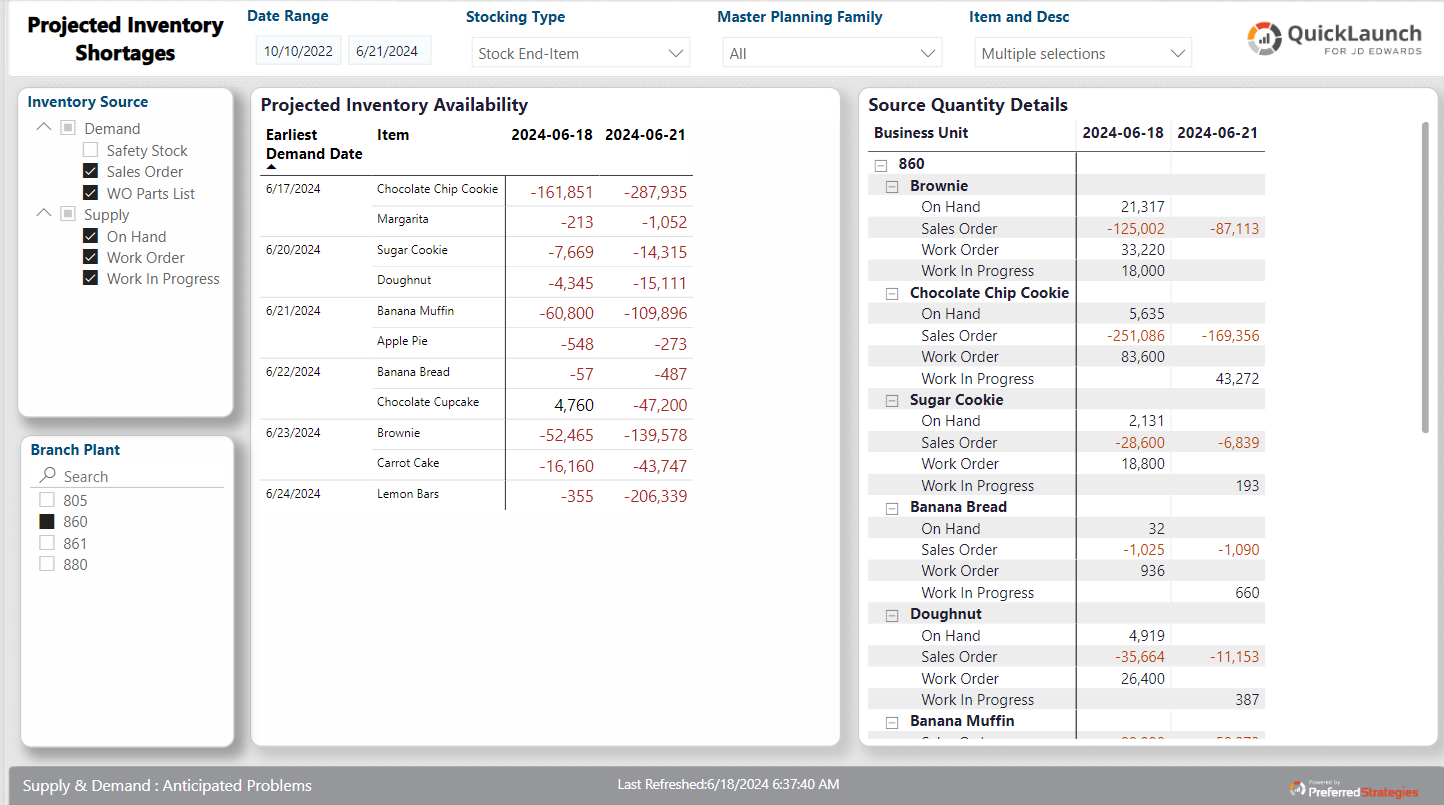
Challenges with Native JDE Supply and Demand Reporting
The current release of JD Edwards only supports viewing one item at a time through the Supply & Demand Inquiry Application. In addition, users can only analyze one Branch/Plant at a time. This can make exception reporting very difficult as users will need to enter every product they manage for each branch, one by one, to try to spot any availability issues. Furthermore, additional JDE applications are needed to explore the supporting detailed data and what might be contributing to problems. This limitation makes identifying potential supply issues both difficult and time-consuming for business users to research and resolve.
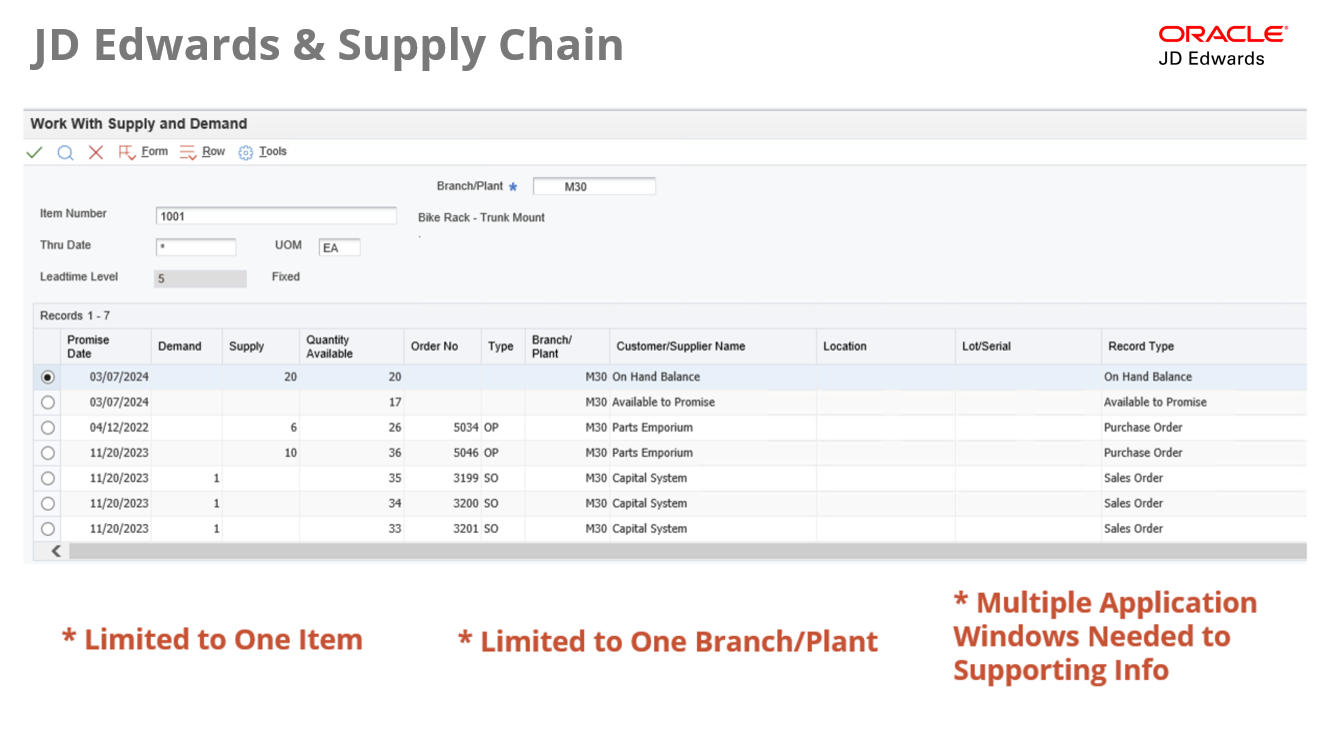
Achieve Better Inventory Management with QuickLaunch
The QuickLaunch Supply & Demand Planning perspective empowers users to investigate inventory items with projected shortages inside an interactive Power BI dashboard pulling in the latest JDE data. With this solution, users can quickly refine the analysis by performing the following:
- Defining the time range to review items with shortages
- Deciding between stocking types like finished goods or raw material items
- Choosing relevant Branch Plants
- Selecting inventory sources to focus on, such as On Hand, Safety Stock, In Inspection, In Transit, Sales Order, Work Order, WO Parts List, Forecast, Work in Progress.
This refinement process enables you to make sure you’re addressing the most relevant shortages first. For example, the Inventory Source filter gives users the ability to not include Safety Stock so you can prioritize shortages that dip beyond safety stock. Or you can choose to sort projected shortages based on the Earliest Demand Date so you can see which Sales Orders have been open the longest or will need to be shipped the soonest.
Once your team has prioritized what inventory problems to tackle first, the next step is to dive into the details and figure out what actions your company can take to help solve these issues and avoid disruptions in the supply chain. This is easily accomplished using the pre-configured drill through reports, such as the WIP report seen below, that allow users to look up information from all the JDE transaction tables used to project the inventory shortage.
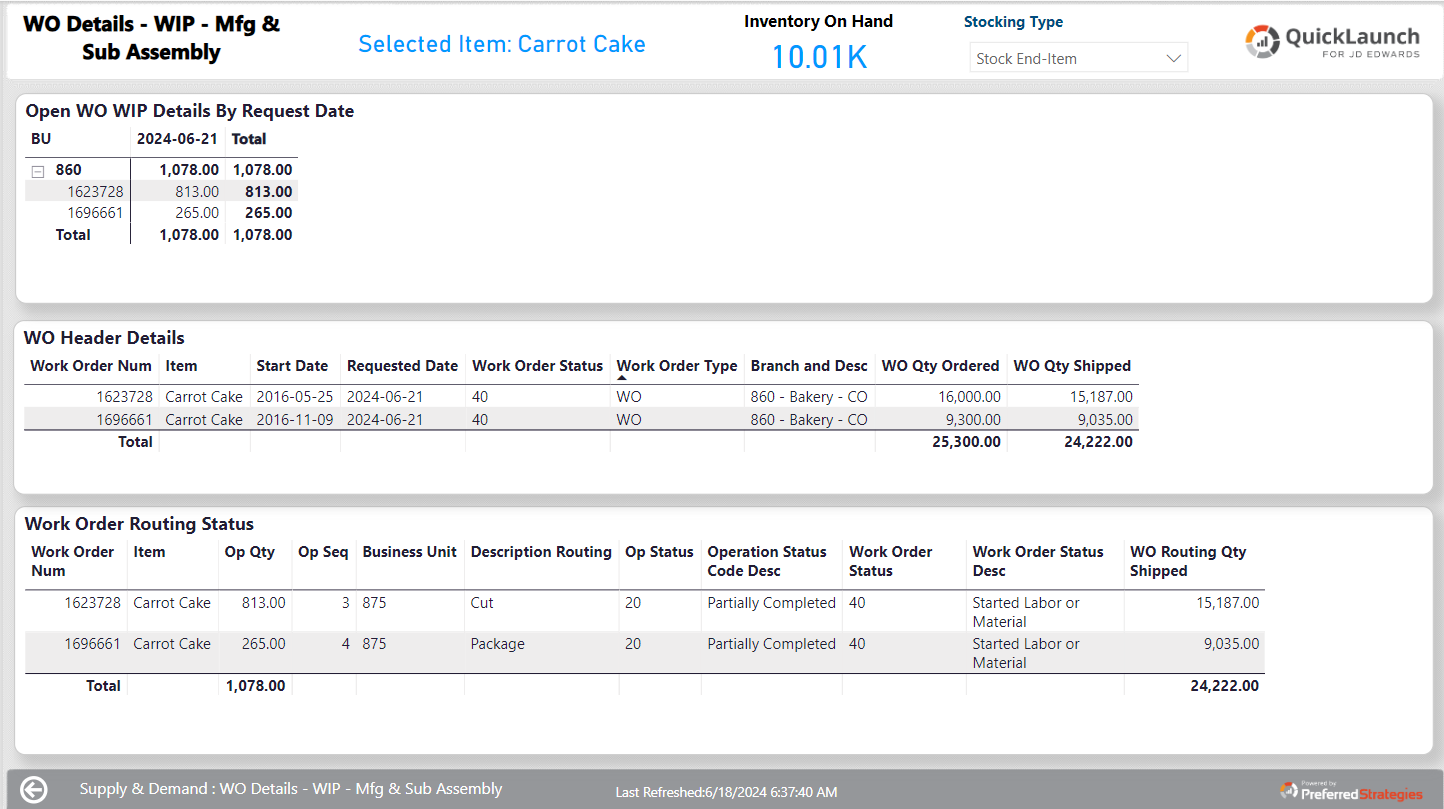
Here’s example of the insights and actions our customers are gaining from this Supply and Demand Planning analysis:
- Identifying where and when shortages for an item will occur
- Determining what is driving the shortage
- Establishing when availability will be restored
- Analyze Work Order details for shortages and contact manufacturing departments to highlight anticipated problem and possible resolutions
- Identify and prioritize what products should have work orders submitted the soonest.
- Drill into Procurement details to identify what products the procurement team should prioritize ordering
Click here to view an interactive demo of the Supply and Demand dashboard in action.
Under the Hood
As most users are probably aware of, the table structures of JDE can be confusing and relating them together can be a daunting task. However, in this solution we merge all the transaction tables needed to do effective supply and demand planning and present the data back in business-friendly formats that are ready for analysis. See below for a list of the transaction tables included in this module.
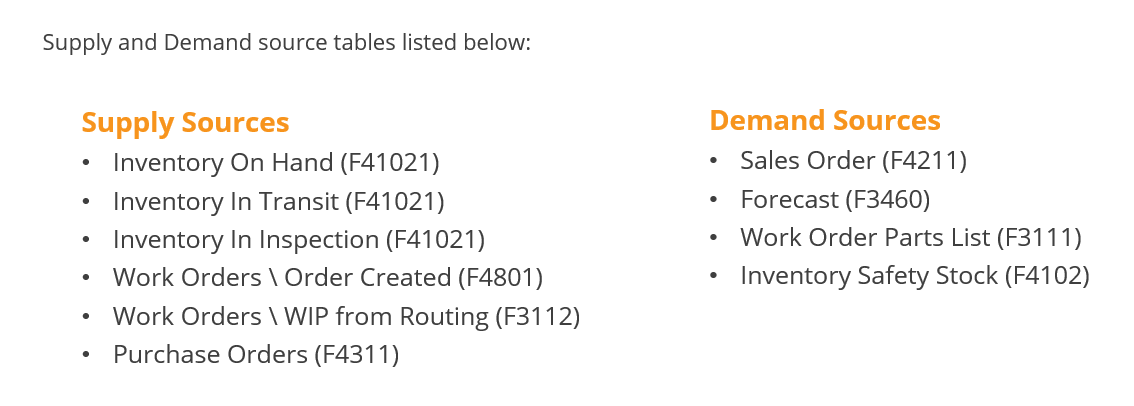
The Supply and Demand module can be customized to suit your company’s specific needs by giving you the flexibility to configure the core components of the solution. For example, you can set up whether Work Orders will be considered as a supply source before or after the order is released to the floor. Here’s a list of different elements that you can customize:
- Quantity – what quantity column from the ERP to use in calculations?
- Unit of Measure Conversions – what UOM do you use for your quantities?
- Projected Date – what date column from the ERP to use in calculations?
- Inclusion Rules – what transactions should be included from each of the source tables?
In addition, the Supply and Demand Planning solution can further be tailored to your operations by providing a framework for you to incorporate other data sources, outside of JD Edwards, in one centralized location. This may include other ERP systems or instances, Line of Business apps, EPM planning and forecasting information, weather data and more. QuickLaunch allows you to combine enterprise-wide data into a single source of truth to uncover insights and ignite smarter business decisions.
Your JDE Supply and Demand Planning Future
Implementing a robust inventory management system brings significant benefits to organizations. By identifying inventory issues earlier, businesses can proactively plan corrective actions, ensuring smooth operations and minimizing disruptions. Users can save valuable time in researching pending problems, allowing teams to focus on more strategic tasks. Furthermore, it enables the prioritization of material usage to satisfy the highest value needs, thereby optimizing resource allocation and enhancing overall efficiency. With these advantages, companies can achieve better control over their inventory, improve customer satisfaction, and drive sustainable growth.
References:
1Allied Market Research. “Supply Chain Management Market Statistics: 2023.”






